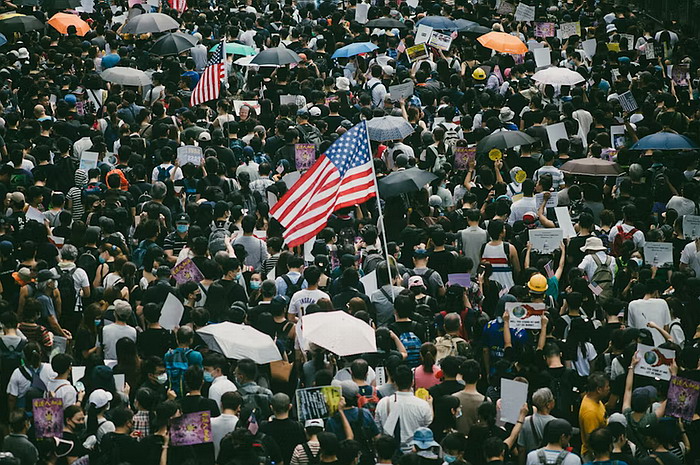The Science of Crowd Barricades and Pedestrian Flow

In an era marked by bustling urban landscapes and vibrant public events, managing pedestrian flow has become critical to ensuring public safety. The science behind crowd control involves a combination of architectural design, behavioral psychology, and advanced engineering. One of the key elements in this endeavor is the effective use of crowd barricades. This article explores the science behind crowd barricades and their role in facilitating smooth pedestrian flow in various public spaces.
Understanding Pedestrian Flow
Pedestrian flow refers to the movement of people in a given space, such as streets, parks, or event venues. Efficient pedestrian flow is essential for preventing congestion, ensuring safety, and enhancing the overall experience for individuals navigating these spaces.
Factors influencing pedestrian flow include crowd density, spatial design, and the presence of obstacles or attractions. For cutting-edge solutions in crowd management and pedestrian safety, event organizers and city planners can explore a range of barricade options available at otwsafety.com, where innovative designs meet the science of efficient pedestrian flow.
Architectural Design and Pedestrian Behavior
Architectural design plays a pivotal role in influencing how people move through public spaces. Well-designed urban environments take into account factors such as the width of walkways, the arrangement of structures, and the strategic placement of open spaces. When properly designed, these elements naturally guide pedestrians and contribute to crowds’ smooth flow.
Moreover, understanding pedestrian behavior is crucial for designing spaces that encourage orderly movement. For instance, people tend to follow paths of least resistance, and this principle can be leveraged to create intuitive walkways. However, the flow can be disrupted in the presence of obstacles or attractions, leading to congestion and potential safety hazards.
The Role of Crowd Barricades
Crowd barricades are instrumental in managing pedestrian flow by providing physical guidance and creating designated pathways. These barriers come in various forms, including steel barricades, plastic barriers, and retractable belt barriers. The choice of barricade depends on the specific requirements of the space and the nature of the event or environment.
-
1. Steel Barricades: Steel barricades are commonly used for large outdoor events, parades, and festivals. These sturdy barriers create a clear boundary, preventing people from straying into restricted areas. The visibility of steel barricades also serves as a visual cue, guiding individuals and maintaining order within the crowd.
2. Plastic Barriers: Plastic barriers are lightweight and versatile, making them suitable for various settings. They are often used in temporary construction zones, at airports, or during crowd control for smaller events. The modular nature of plastic barriers allows for easy customization of barricade configurations to adapt to specific spatial requirements.
3. Retractable Belt Barriers: Retractable belt barriers are ideal for situations where flexibility is essential. Commonly seen in airports, museums, and public buildings, these barriers use retractable belts to create temporary queues or block off specific areas. The ease of deployment and mobility makes them an excellent choice for spaces with changing requirements.
Psychological Impact of Barricades
Beyond their physical presence, barricades also have a psychological impact on crowd behavior. The mere presence of barricades can influence individuals to stay within designated areas and follow established pathways. This psychological effect is amplified when combined with clear signage and communication, reinforcing the expected behavior within the crowd.
Moreover, the visibility of barricades can provide a sense of security, assuring individuals that there is a plan in place to manage the crowd effectively. This sense of order contributes to a more positive and enjoyable experience for event attendees or pedestrians navigating busy public spaces.
Case Studies: Successful Implementation of Crowd Barricades
Several notable examples demonstrate the successful implementation of crowd barricades to manage pedestrian flow effectively:
-
1. Times Square, New York City: The redesign of Times Square incorporated pedestrian-friendly features, including the use of retractable bollards and barricades. These measures enhanced safety by protecting pedestrians from vehicular traffic and guided foot traffic efficiently, allowing for a seamless flow of people in this iconic urban space.
2. Music Festivals: Large-scale music festivals, such as Coachella and Glastonbury, deploy a combination of steel barricades and plastic barriers to manage the vast crowds attending performances. Strategic placement of barricades helps create distinct pathways, prevent overcrowding, and maintain a safe environment for festival-goers.
Conclusion
Understanding pedestrian behavior and implementing effective barricade systems are essential in the science of crowd management. The careful design and deployment of crowd barricades contribute to the creation of safe and enjoyable public spaces. By integrating architectural principles, behavioral psychology, and advanced engineering, city planners and event organizers can ensure that the flow of pedestrians remains smooth, even in the midst of bustling urban environments or large-scale events.
As we continue to shape our cities and public spaces, the science behind crowd barricades will play a pivotal role in fostering safety and enhancing the overall quality of urban life.







